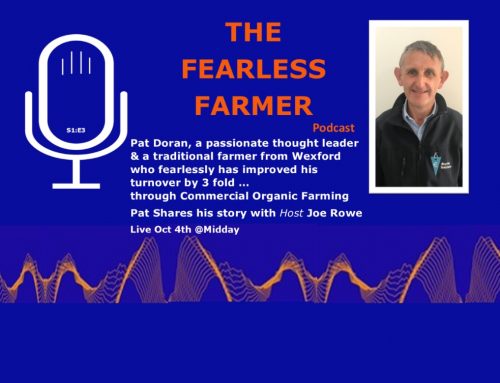A common problem on many dairy farms when cows are walking into the parlour twice a day from paddocks is lameness.
Lameness is associated with a decrease in milk production and it can increase the probability of a cow being culled from the herd.
Kieran McGee, who is a hoof care professional for FRS explained: “The biggest issue we are seeing this year with cows is Mortellaro, which is an infection that affects the skin near the hoof.
Animal manure lying around collecting yards on farms is a breeding ground for Mortellaro to thrive in, which we are seeing a lot of this year – more so than other years.
“Farmers are that busy – especially since the expansion of the dairy herds since 2015 – that they don’t have the time to regularly footbath cows like they might have been able to do previously.
“The only way to combat against Mortellaro is through regular footbathing and cleaning down the collecting yard after each milking.
“We are also seeing a few issues with stock bulls as well in terms of lameness. The majority of the farms that I went out to were just to do some routine hoof trimming; however, some bulls, because they are carrying so much weight, are showing signs of white line disease.
“A stock bull should be routinely trimmed every six months to make sure they are in good working order.
“Bulls that are heavily fed can have problems with their feet, and as they get older, and if they aren’t looked after properly, they can be hard to get ‘back right’ again.”
‘Long walk’
On some farms, cows may have to walk a considerable distance – in excess of 1km – to get to a paddock from the milking parlour. When asked was this a problem when it comes to increasing the likelihood of cows becoming lame, Kieran said it was.
He added: “For sure it is a problem, especially on farms where roadways wouldn’t be maintained that well. Again, it’s going back to the farmers being so busy and not having the time to get to do these jobs.
“If possible, farmers should try to keep their roads in reasonable condition. I have seen some farmers put down astroturf on their roadways, in particular, areas where there is high traffic.
“For example, at bends in the roadways and at the entrance of the collecting yard. They say it has reduced the number of cases of lame cows.
“Astroturf provides cows with more of a cushioned surface and it reduces the amount of time they are coming into contact with stones.”
‘Prevention’
Kieran mentioned that in wet weather, cows’ feet tend to get soft. So, in order to prevent any lameness problems, he advised farmers to run their cows through a footbath solution consisting of copper sulphate (bluestone).
He explained: “To help harden up the hoof, when the weather is wet, I’d be telling farmers to run their cows through a footbath solution made up of copper sulphate.
It will help to stop stones/pebbles lodging in the cow’s foot. A farmer that has no major problems with lameness, I’d be saying to run the cows through a footbath twice a week.
“However, a farmer who is in major bother – with lameness issues – might need to run his cows through one [footbath] every day until they get on top of it.
“To keep away white line disease and keep cows’ feet in tip-top order, a footbath solution consisting of bluestone should do the trick.
“In the case of Mortellaro, it would be best to talk to your vet to get a suitable treatment for it.”
‘Busy time of the year’
The expansion of the Irish dairy herd since the abolishment of milk quotas in 2015 has seen Kieran become much busier.
He added: “We are definitely busier compared to before 2015. As a rule of thumb across Ireland, you’re looking at between 15% and 18% of dairy cows being lame at any one time.
“In wet weather that figure would be higher, while in dry weather it would be marginally smaller.
A lame cow could cost a farmer up to €300. If you have 150 cows and 20% of them are lame, the financial impact of that is going to big.
“Some farmers I have spoken to have gone down the route of trimming their cows twice a year. Cows’ feet are like the foundation of a house, if your foundation is bad your going to have problems and the exact same can be said for cows’ feet.
“If a cow has sore feet, she won’t be as inclined to graze and this will impact on her milk production.”






